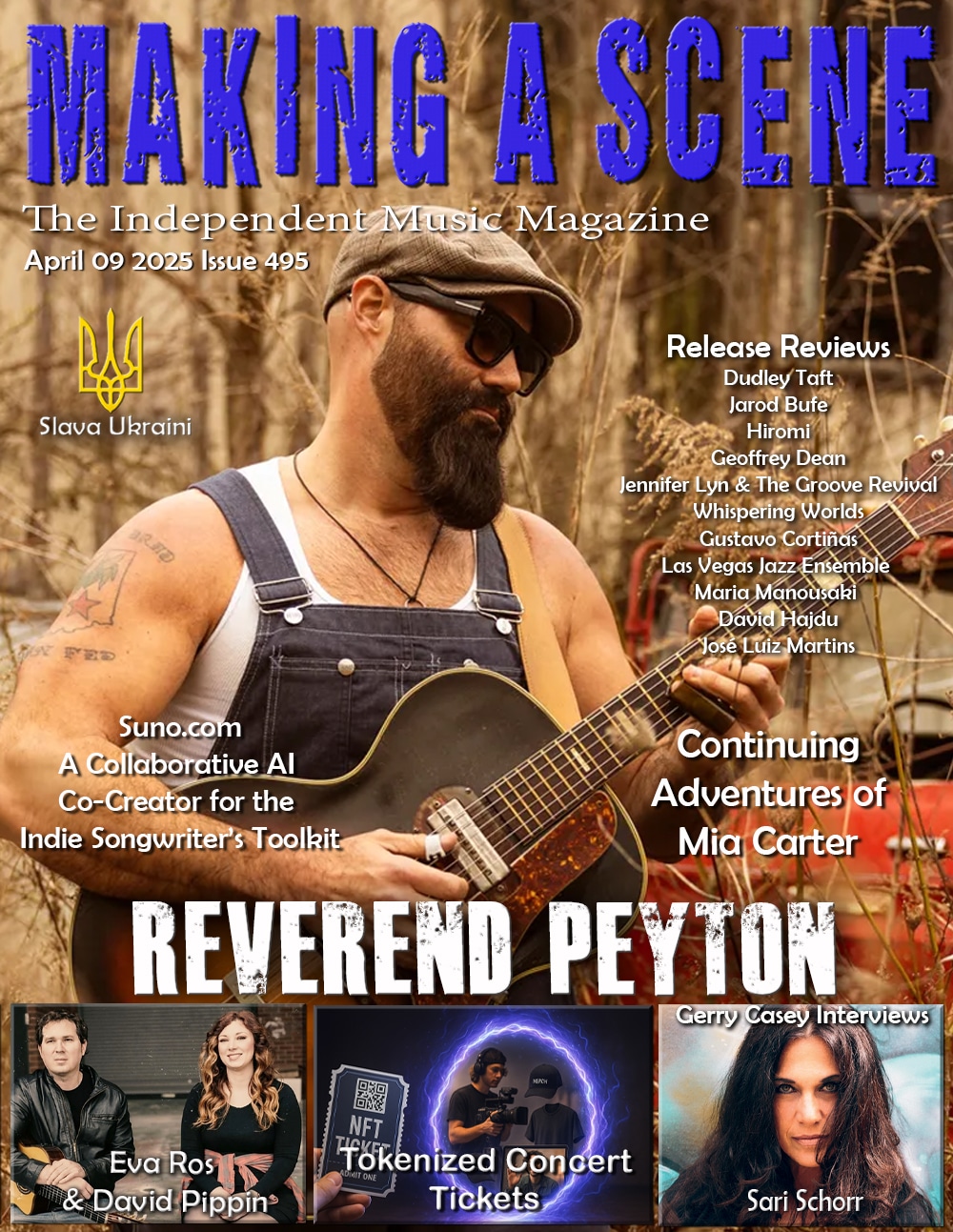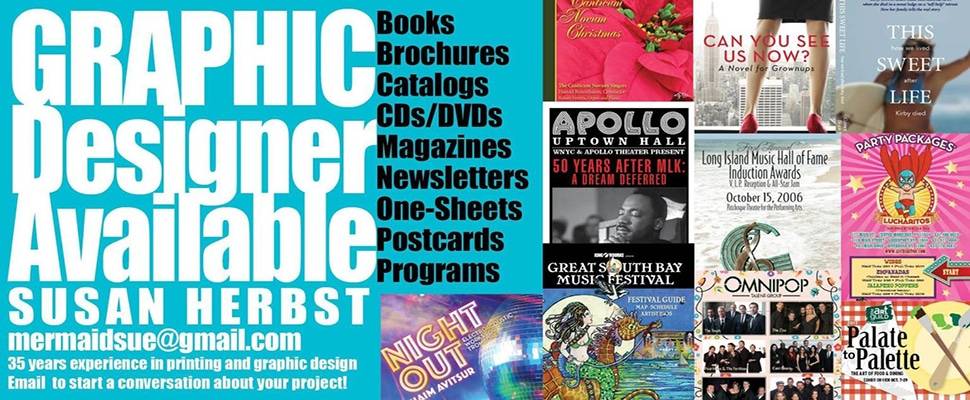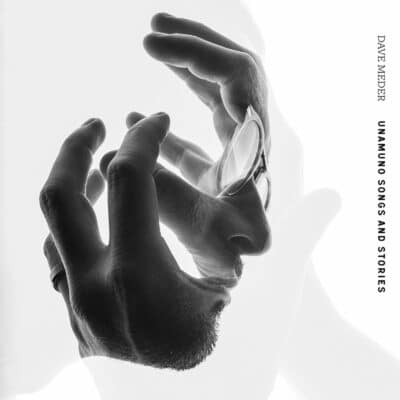Dave Meder Unamuno Songs and Other Stories
Unamuno Songs and Other Stories
Outside in Music
Undoubtably you are wondering just what are Unamuno songs? This album has quite a concept behind it. Pianist and composer Dave Meder is using the writings of Spanish Civil War-era philosopher Miguel de Unamuno as a historical analogy to recent sociopolitical unrest here in the States. Meder views these the polarized political climate of these times as “critical moments” in our history and is using the philosopher’s writings to raise awareness of the growing threats to American democracy. Unamuno was a complicated man whose life and work are marked by the conflict between liberalism and staunch Catholicism, and his documentation of democracy sliding gradually into dictatorship has long fascinated Meder. Much of Unamuno’s perspective is captured in the liner notes with this key phrase perhaps the most important of all – “…to be silent is to lie, for silence can be interpreted as assent.” Meder concludes the notes by indicating that this is musical way of denying assent.
Much of the music is rendered by his trio of bassist Marty Jaffe and drummer Michael Piolet, with trumpeter Philip Dizack playing on two tracks and alto saxophonist Miguel Zenón on one. The music of Unamuno Songs and Stories is centered firmly around the jazz tradition while drawing thoughtful influences from an array of sources including Bach chorales, the blues, minimalism, and the piano works of Spanish composer Isaac Albéniz. Meder composed seven of the nine pieces while also including Lerner and Loewe’s “If Ever I Would Leave You” and Sir Roland Hanna’s “Century Rag.” He even sings wordless vocals to connote a chorale ( a la Bach) on the opening “Song of Secret Love” which is a line from an unnamed poem found in Unamuno’s later anthology Cancionero and conveys the vicissitudes of euphoria to melancholy, setting the tone for the music on the album which ranges from graceful and elegant to intense and spirited. No matter the tone, it is all deeply evocative.
“Augusto’s Dilemma” is inspired by the main character in Unamuno’s ground-breaking novel Niebla. Unamuno would call Niebla a “nivola,” distinguishing it from the usual Spanish term for novel (novela). Rather than following the standard novel archetype, in which characters move through a linear plot in a realist world, Unamuno in Niebla “allows” the fictional main character, Augusto Pérez, to build his world as he moves along. Meder then tries to reflect this stream of consciousness approach in the piece with meandering time signatures, and interestingly, a 12-bar blues mid-piece to resemble the character improvising and stumbling his own way through the musical form.
Intense and spirited describes “I Look For Religion in War,” derived from of the philosopher’s pieces entitled “From the Writings of a Warrior” which turns the concept of peace on its head, viewing it as a fleeting reality whereas true calm is found in warfare and battle. The somber ostinato that begins the piece is to resemble a war chant and as the tempo and intensity build, Meder and trumpeter Philip Dizack float above the rhythmic fray to connote the calm found in midst of a conflict. As they reach a climax, the music dissolves into a hymn-like melody loosely influenced by the piano works of Albéniz, followed by a rhapsodic bowed bass solo, and then some triumphant blowing from Dizack to perhaps signify that in the end we don’t worship any god in the way that we worship war and conflict.
Meder rather cleverly inserts the lovely Songbook standard as a bit of respite between the aforementioned and the next Unamuno-based piece, “The Lake and the Mountain,” which comes from the philosopher’s most well-known work, “San Manuel Bueno, Mártir” (Saint Emmanuel the Good, Martyr). The short story centers around Don Manuel, the priest of a fictional rural village and his spiritual doubts – the mountain symbolizes faith and its promise of eternal life while the lake represents internal struggles, doubts and complexities. Highlighting this duality is the ever-expressive Miguel Zenón, with his emotive tone and full control of dynamics.
A second meditation entitled “Faith” (the first was entitle “Doubt”) and Hanna’s “Century Rag” precede the final Unamuno-inspired piece, “Exile.” It is a reference to Unamuno’s time in physical exile from Spain (1924-1930). The writer’s outspoken critiques of dictatorship forced him to leave the country until a republic was reestablished in 1931. Yet, the piece serves mostly to connote the feelings of mental and emotional exile. Dizack returns to form a quartet that engage in music described by Meder in the liners this way, “The group begins as a unified society, playing the melody together, but we quickly become exiled from each other, pursuing our own paths, rhythms, phrases…conversing here and there but largely existing independent of one another. As the piece builds, we begin to come together again. And all the while, we are beginning to build something together: a grand and beautiful musical metropolis, if you will, where everyone maintains their individual voice while being an integral part of the whole. More importantly, everyone has an equal right to express their individual voice within this whole. Eventually, we reach a sort of catharsis, an outpouring of love and beauty, and the recognition of the collective pain we have experienced. Back together again, we return to the melody in a new spirit: one of hope, optimism, and a sense of rebirth.”
So, through the darkness there is light. Let’s hope we can experience this lasting vision Meder outlines above. In the meantime we can hopefully use his music as a means of healing and inspiration to speak out rather than remain silent.
- Jim Hynes.
Buy Us a Cup of Coffee!
Join the movement in supporting Making a Scene, the premier independent resource for both emerging musicians and the dedicated fans who champion them.
We showcase this vibrant community that celebrates the raw talent and creative spirit driving the music industry forward. From insightful articles and in-depth interviews to exclusive content and insider tips, Making a Scene empowers artists to thrive and fans to discover their next favorite sound.
Together, let’s amplify the voices of independent musicians and forge unforgettable connections through the power of music
Make a one-time donation
Make a monthly donation
Make a yearly donation
Buy us a cup of Coffee!
Or enter a custom amount
Your contribution is appreciated.
Your contribution is appreciated.
Your contribution is appreciated.
DonateDonate monthlyDonate yearlyYou can donate directly through Paypal!
Subscribe to Our Newsletter
Discover more from Making A Scene!
Subscribe to get the latest posts sent to your email.















































